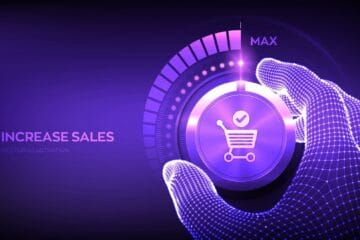In the ever-evolving landscape of field sales, challenges are as predictable as the sunrise. Whether you’re field sales reps on the front lines or sales leaders strategizing from the back office, you’ve undoubtedly encountered these roadblocks.
They can range from the seemingly mundane, like administrative tasks that nibble away at your precious selling time, to the more formidable, such as swiftly adapting to the whirlwind of market changes.
But what if there was a secret weapon to transform these challenges into stepping stones toward success? What if this weapon was already at your fingertips, waiting to be unleashed? Yes, we’re talking about technology.
It’s not just about the latest gadgets or apps; it’s about leveraging the power of technology to streamline processes, enhance efficiency, and ultimately, drive sales performance to new heights.
Intrigued? You should be. Because in the following sections, we’re going to delve deep into the world of field sales challenges and reveal how technology can be your most trusted ally in overcoming them.
So, are you ready to turn your challenges into opportunities? Let’s embark on this journey together.
Challenge 1: Time-Consuming Administrative Tasks
Administrative tasks are the necessary evils of any job, including field sales. They include activities like data entry, paperwork, and reporting.
While these tasks are essential for maintaining order and accountability, they can consume a significant portion of your selling time, hindering your productivity. As a field sales rep, your primary role is to sell. But when administrative tasks start eating into your selling schedule, it’s a problem. So, how can you overcome this obstacle?
Modern Solutions for Time-Consuming Administrative Tasks
- Automate Routine Tasks: Use automation tools to handle repetitive tasks. Tools like Salesforce, Zoho CRM, and HubSpot Sales Hub can automate data entry, email responses, and more.
- Prioritize Tasks: Not all administrative tasks are equally important. Identify the most critical tasks and prioritize them.
- Set Specific Hours for Administrative Tasks: Dedicate specific hours of your day for administrative tasks. This way, they won’t interfere with your selling period.
- Use CRM Systems: CRM systems can streamline administrative tasks. They can handle contact management, pipeline tracking, and reporting, enhancing your efficiency.
- Delegate When Possible: If your company has administrative staff, delegate some of the administrative tasks to them.
- Use Mobile Apps: Mobile apps can help you handle administrative tasks on the go, saving you time.
- Continuous Learning and Training: Stay updated with the latest tools and technologies that can help you reduce the burden of administrative tasks.
Challenge 2: Finding Qualified Leads
Finding qualified leads is like searching for a needle in a haystack. It involves identifying potential customers who are likely to be interested in your product or service.
This process is crucial for your sales success because the more qualified leads you have, the higher your chances of making a sale. However, finding these leads is often tedious and challenging. So, how can you overcome this roadblock?
Modern Solutions for Finding Qualified Leads
- Use Lead Generation Tools: Tools like LinkedIn Sales Navigator, Clearbit, and Leadfeeder can help you find and qualify leads.
- Leverage Social Media: Social media platforms can be a goldmine for leads. Use them to identify potential leads and engage with them.
- Create High-Quality Content: High-quality content can attract potential clients, increasing your chances of generating qualified leads.
- Use SEO Techniques: SEO can increase your site’s visibility, attracting more potential markets and increasing your chances of finding qualified leads.
- Leverage AI and Predictive Analytics: These technologies can analyze data and predict who is likely to become a qualified lead.
- Attend Networking Events: Networking events are great places to find potential customers. Attend these events and engage with attendees.
- Offer Free Trials or Demos: Offering free trials or demos can attract potential clients, increasing your chances of finding qualified leads.
Challenge 3: Handling Sales Objections
Sales objections are the reasons potential customers give for not making a purchase. They can be related to price, product features, or even the timing of the purchase.
Handling these objections effectively is crucial for moving prospects closer to making a purchase. However, this task can be challenging, especially when dealing with difficult customers. So, how can you overcome this obstacle?
Modern Solutions for Handling Sales Objections
- Understand the Objection: Listen carefully to your prospect’s concerns and ask clarifying questions if necessary.
- Use AI-Powered Sales Training Tools: Tools like Beest.app, Gong, and Chorus.ai can provide training and insights on how to handle objections.
- Empathize with Your Prospect: Show them you understand their concerns. This can help build trust and open the door for further discussion.
- Provide Evidence: Use case studies, testimonials, or data to address objections. This can help build credibility and reassure your prospect.
- Offer Alternatives: If a prospect objects to a specific feature or aspect of your product, offer an alternative if possible.
- Follow Up: Sometimes, prospects need to think over their objections. Make sure to follow up with them after your discussion.
- Know When to Walk Away: Not every prospect will be a good fit for your product. If you can’t address an objection, it might be best to walk away.
Challenge 4: Optimizing Travel Time
Travel schedule optimization involves planning your travel routes and schedules to minimize wasted time and maximize productivity.
As a field sales rep, you spend a significant amount of time traveling between client locations. However, without proper planning, this travel span can become a productivity killer. So, how can you overcome this roadblock?
Modern Solutions for Optimizing Travel Time
- Use Route Optimization Software: Tools like MapAnything, Badger Maps, and Route4Me can help you plan the most efficient routes between client locations.
- Plan Your Day in Advance: Before you start your day, plan out your schedule and routes. This can help you avoid last-minute changes and delays.
- Combine Meetings: If possible, try to combine meetings that are in the same area. This can help you save travel time.
- Use Virtual Meetings: For initial meetings or follow-ups, consider using virtual meetings. This can save travel time and allow you to meet with more clients.
- Stay Organized: Keep track of your meetings, routes, and schedules in a planner or digital calendar. This can help you stay organized and avoid missed meetings or delays.
- Consider Traffic and Other Delays: When planning your routes, consider potential traffic and other delays.
- Stay Flexible: Sometimes, delays are unavoidable. Stay flexible and be ready to adjust your schedule if needed.
Challenge 5: Managing Sales Performance
Sales performance management involves tracking and analyzing your sales activities and results to identify areas for improvement. It’s crucial for understanding how well you’re meeting your sales goals and where you need to improve.
However, managing sales performance can be challenging, especially when you’re in the field. So, how can you overcome this obstacle?
Modern Solutions for Managing Sales Performance
- Use Sales Analytics Tools: Tools like Beest.app, Pipedrive, Clari, and InsightSquared can help you identify trends and areas for improvement.
- Set Clear Goals: Make sure your goals are specific, measurable, achievable, relevant, and time-bound (SMART).
- Get Regular Feedback: Regular feedback from your manager or peers can help you identify areas for improvement and develop strategies to improve.
- Stay Organized: Keep track of your sales activities and results in a CRM or other sales management tool. This can help you stay organized.
- Invest in Training: Regular sales training can help you improve your sales performance. Consider investing in online courses, workshops, or coaching.
- Celebrate Wins: Celebrating your wins, no matter how small can boost your motivation and morale. Make sure to celebrate your achievements.
- Stay Positive: No matter how demanding field sales can get, stay positive and remember that every problem is an opportunity for growth.
Challenge 6: Maintaining Customer Relationships
Maintaining customer relationships involves building and nurturing strong connections with your customers. It’s crucial for customer satisfaction, loyalty, and repeat business.
However, juggling multiple customer relationships can be tedious, especially when you’re always on the go. So, how can you overcome this obstacle?
Modern Solutions for Maintaining Customer Relationships
- Use CRM Systems: CRM systems like Beest.app, Microsoft Dynamics 365, Freshsales, and Nimble can help you manage and nurture customer relationships.
- Communicate Regularly: Regular communication can help you stay top-of-mind with your customers. Make sure to check in with them regularly, even if it’s just a quick email or phone call.
- Provide Excellent Customer Service: Excellent customer service can help you build strong relationships with your customers. Make sure to address their concerns promptly and professionally.
- Personalize Your Interactions: Personalized interactions can make your customers feel valued and appreciated. Use your CRM system to keep track of personal details and use them in your interactions.
- Ask for Feedback: Regular feedback from your customers can help you understand their needs and expectations. Use this feedback to improve your products or services.
- Offer Value: Regularly offer your customers value, whether it’s in the form of useful content, special discounts, or personalized recommendations.
- Stay Professional: Always maintain a high level of professionalism in your interactions with customers. This can help build trust and respect.
Challenge 7: Adapting to Market Changes
Adapting to market changes involves staying updated with the latest trends and shifts in your industry and adjusting your sales strategies accordingly.
It’s crucial for staying competitive and meeting your customers’ changing needs. However, keeping up with the fast-paced market can be difficult. So, how can you overcome this roadblock?
Modern Solutions for Adapting to Market Changes
- Use Market Research Tools: Tools like Beest.app, Google Trends, SEMrush, and Marketo can help you stay updated with market changes.
- Stay Curious: Always be on the lookout for new trends or changes in your industry. Read industry blogs, attend webinars, or join industry groups on social media.
- Adjust Your Sales Strategies: Don’t be afraid to adjust your sales strategies based on market changes. Remember, flexibility is key in sales.
- Listen to Your Customers: Your customers can be a great source of information about market changes. Listen to their feedback and adjust your strategies accordingly.
- Invest in Continuous Learning: Regular training or courses can help you stay updated with the latest trends and strategies in sales.
- Monitor Your Competitors: Keep an eye on what your competitors are doing. They might be onto a new trend that you haven’t noticed yet.
- Stay Positive: Market changes can be challenging, but they also bring new opportunities. Stay positive and see every change as an opportunity for growth.
Final Thoughts | Tech-Advanced Solutions For Your Field Sales Team
The dynamic world of field sales is filled with roadblocks, but with the right technology, these hurdles can be transformed into opportunities for growth and success.
From automating administrative tasks to optimizing travel periods, from enhancing lead qualification to improving sales performance, technology provides a myriad of solutions. It’s time to leverage these technological advancements and turn your field sales obstacles into stepping stones for success.
Remember, every trial is an opportunity in disguise. So, embrace technology, overcome your challenges, and take your field sales performance to new heights. You can start with booking a free demo with Beest.app – a credible and reliable field sales management software.
After all, in the fast-paced world of field sales, staying ahead of the curve is not just an option, it’s a necessity. Are you ready to uncover the power of technology in field sales?
Frequently Asked Questions
How can technology help in overcoming field sales challenges?
Technology can automate routine tasks, optimize travel routes, and provide real-time data, enabling field sales reps to focus more on selling. It can also provide a sales team valuable insights into sales performance, helping identify areas for improvement. Furthermore, technology can enhance lead qualification and customer relationship management, driving sales success.
What are the key features to look for in technology solutions for field sales?
Key features to look for include automation capabilities, instantaneous data access, CRM integration, lead management tools, and sales analytics. Additionally, route optimization features and mobile accessibility can greatly enhance field sales productivity. User-friendliness and robust customer support are also important considerations.
How can technology improve lead qualification and targeting in field sales?
Technology can leverage AI and predictive analytics to analyze audience data, helping to identify high-quality leads. It can also track client behavior and preferences, enabling more personalized and effective targeting for sales reps. Moreover, technology can automate the lead qualification process, saving effort and improving accuracy.
What are the benefits of using technology for travel management in field sales?
Technology can optimize travel routes, reducing travel duration and increasing productivity. It can also provide live traffic updates, helping to avoid delays. Additionally, technology allows for efficient scheduling and planning of client visits, maximizing the use of time in the field.
How can technology enhance sales performance management in field sales?
Technology can provide detailed analytics on sales activities and results, helping a sales team to identify trends and areas for improvement. It can also automate the tracking of key performance metrics, providing instant insights into sales performance. Furthermore, technology can facilitate effective communication and collaboration within the sales team, enhancing overall performance.
What role does technology play in maintaining customer relationships in field sales?
Technology, particularly CRM systems, plays a crucial role in maintaining customer relationships by organizing and automating customer-related tasks. It helps sales reps in tracking client interactions, personalizing communication and providing timely follow-ups. Moreover, it can analyze behavior and preferences, enabling more effective customer engagement and satisfaction.












